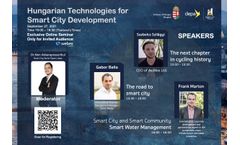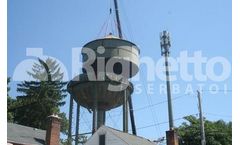communal water Articles
-
Sustainability of small water supplies: lessons from a Brazilian Program (SESP/FSESP)
This paper describes a highly successful community water supply program that was a part of a cooperative effort between Brazil's Ministry of Health and the Institute for Inter-American Affairs of the United States. The Serviço Especial de Saúde Pública (SESP) built hundreds of small water supplies across Brazil from 1942 to 1991 with an extremely low failure rate. When it was evaluated in 1960, ...
-
Is community water management the community’s choice? Implications for water and development policy in Africa
The global drive for universal drinking water security has faltered in rural Africa. Community management of handpumps, which provide water to over 200 million rural people, is the prevailing but increasingly embattled policy choice. A choice experiment is designed to test alternative maintenance models across competing attributes of maintenance provider, maintenance level, payment mode, and ...
-
Groundwater use and policy in community water supply in Finland
Selection between ground and surface water in community water supply has been one of the key strategic questions in Finland since the early 1900s. After some cities failed to find reliable groundwater sources, many turned to surface waters. Since the 1950s the use of groundwater and artificial recharged groundwater have continuously increased. Presently their use is promoted by the government and ...
-
Water, For All, Forever: Managing Water Locally
In November 2011, the joint publication by Oxfam, WaterAid and the Institute of Civil Engineers entitled ‘Managing Water Locally: An important dimension of community water management,’ was launched at the ICE in London. As a follow- up to the London Launch Newcastle University have organised a workshop on local level solutions to water security - 'Water, For All, Forever: Managing ...
-
Standardizing defluoridation of community waters using bone char
Different bone char (BC) preparation methods affect the physical chemical properties and therefore the capacity to remove fluoride. Fluoride removal capacities of BC prepared at three controlled temperatures, with particle grain sizes of 250–500 μm, 500–1,000 μm and 1,000–1,800 μm were determined in column experiments with an initial fluoride concentration of 8.55 mg/L. The sorbent was ...
-
Analyzing the potential of community water systems: the case of AguaClara
Successful maintenance of water provision has as much to do with the ongoing governance of these systems as the technology that goes into building them. This governance generally occurs at the community level. Most water systems are small and located in areas where there is generally not the profitability necessary to entice private investment. Understanding how community management can improve ...
-
Assessing the influence of social capital on water point sustainability in rural Ethiopia
Despite considerable investment, sustainability of rural water resources remains a critical challenge in Ethiopia. Evidence suggests social capital – the networks, norms, and trust that facilitate cooperative behaviors – influences a community's ability to manage communal water resources. In turn, strong community governance of water resources may lead to sustainable resource management. ...
-
Water disputes in the Ecuadorian context up to the Third Millennium: no State, no market, no common property. The transition of Santa Rosa (Tungurahua province)
In the Ecuadorian Andes, irrigation depends mainly on private or community-based water management. In 1972, the State started taking over water administration by nationalising water and granting concessions to users' communities. In the beginning, the State did useful work by modernising the water rights system, but because of inter-community conflicts, local concessions were split up and ...
-
Community Ablution Blocks with DEWATS in eThekwini Municipality
eThekwini is a metropolitan area comprising the City of Durban and its surrounding areas. The total population is approximately 0.6 million. Before the inception of community-based water and sanitation programme in 2004, 150,000 families in eThekwini were estimated to be living in basic shacks and suffering from poor water and sanitation conditions. The community ablution blocks (CABs) programme ...
-
Talking about Water Recycling
Introduction Community understanding of water and environmental issues is increasing. In some cases water recycling projects have been controversial but also there have been many successful projects with strong public support. Considerable experience has been gained about the issues affecting community acceptance of water recycling and the conduct of community consultation ...
-
WaterScope presentation in the Smart City Ambassador Program
On September 27, 2021, we participated in the Smart City Ambassador Program organized by the Digital Economy Promotion Agency. It is a postgraduate training which aim is to make the thai participants into a ‘smart city ambassadors’. Our company also joined to the program as a presenter about our smart city products in an online presentation. At the event, 4 professionals, including our colleague ...
-
Installation of the new Glen Head water tank begins
Six months after the dismantling of Glen Head's nearly 100-year-old water tank at Dumond Place began, its replacement began on Tuesday. To manufacture the new facility, several hundred meters high cranes were brought to the site Monday in preparation for Tuesday's installation: the 500,000-gallon tank will store water for Glen Head, Sea Cliff, Roslyn Harbor, Old Brookville and Glenwood Landing. ...
-
A tool for evaluation of lifecycle cost of water production for small-scale community projects
The aim of this study is to develop an analytical tool to estimate lifecycle cost for water service provision for small-scale community water projects. The primary objective is to provide an analytical estimation tool to governments, funding agencies and communities to ensure sustainability of water projects. The secondary objective is to use the tool as an industry benchmarking aid to ...
-
Socio–environmental factors affecting water demand in discrete aboriginal communities in Australia
Water use is a complex function of socioeconomic conditions and climatic factors. This paper considers the socio–economic and physical factors that need to be considered during the design of water supply systems to ensure appropriate supply systems are developed and local needs are met. Data was obtained for remote Indigenous communities located in the Northern Territory, Australia. Information ...
-
Private sector involvement in drinking water supply in Ghana
Two approaches by Private Sector Involvement (PSI) in drinking water supply are followed in Ghana. In the urban areas the public utility (Ghana Water Company Limited) now has private sector management via a management contract, whereas in the small towns and rural areas the responsibility for water services is decentralised. The District Assemblies use the Community Water and Sanitation Agency ...
-
Community water fluoridation predicts increase in age-adjusted incidence and prevalence of diabetes in 22 states from 2005 and 2010
Community water fluoridation is considered a significant public health achievement of the 20th century. In this paper, the hypothesis that added water fluoridation has contributed to diabetes incidence and prevalence in the United States was investigated. Panel data from publicly available sources were used with population-averaged models to test the associations of added and natural fluoride ...
-
Joint water supply projects in rural Cameroon: partnership or profiteering? Lessons from the Mautu–Cameroon Development Corporation (CDC) project
The Government of Cameroon's lack of priority for rural water supply has motivated rural communities to harness their internal capacity and networks for self-help community water supply projects. The emerging paradigm of joint water supply projects between communities in rural Cameroon and large corporations, with both parties as principal beneficiaries (unlike self-help projects where the ...
-
Natural attenuation potential of selected hydrokarst systems in the Carpathian Mountains (Romania)
We examined the potential for natural attenuation of ten hydrokarst systems (HKS) in three mountain units in the Carpathian Mountains. We sampled in places where water enters below ground and where water emerges back to the surface in springs and is used as drinking water by the local communities. Water samples were used to assess the degree of chemical and microbiological pollution. Although ...
-
Aquatic Ecosystem
An aquatic ecosystem is an ecosystem located in a body of water. Communities of organisms that are dependent on each other and on their environment live in aquatic ecosystems. The two main types of aquatic ecosystems are marine ecosystems and freshwater ecosystems.[1] Continue reading the full article ...
-
Digital Water Cluster
Work more efficiently with our AI tool based Digital Clusters, award winning collaboration and knowledge sharing workspaces for your water region, organization or program. We can set up your own Cluster Work space with knowledge management, smart Q&A, document management, collaboration and a business exchange in minutes. Communities are fully configurable ...
By AquaSPE AG
Need help finding the right suppliers? Try XPRT Sourcing. Let the XPRTs do the work for you



